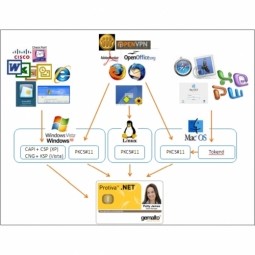下载PDF
PBS Works Suite: Enhancing Workload Management at The University of Nottingham
技术
- 自动化与控制 - 人机界面 (HMI)
适用行业
- 教育
- 生命科学
适用功能
- 设施管理
- 产品研发
用例
- 库存管理
- 智慧校园
服务
- 系统集成
挑战
诺丁汉大学是一所世界一流的学府,拥有超过 43,000 名学生和 100 多个研究小组。该大学的高性能计算 (HPC) 设施支持科学、医学和工程等各个领域的研究。然而,该大学在有效管理多样化的计算工作量方面面临着挑战。 HPC 服务经理 Colin Bannister 博士热衷于最大限度地提高大学 HPC 设备投资的效益。该大学需要一个强大、灵活的工作负载管理套件来确保效率、可用性和性能。所需的系统应该能够有效调度计算工作负载、监视和分析工作负载、提供易于使用的界面并生成简单的管理报告。
关于客户
诺丁汉大学是一所全球认可的机构,致力于提供真正的国际教育、激励学生并进行世界领先的研究。该大学造福于英国、中国和马来西亚校园周围的社区。它拥有超过 43,000 名学生,其中 9,000 多名研究生。诺丁汉大学在英国和欧洲排名前 30 名以及在全球所有大学中排名前 1% 的地位证实了诺丁汉大学作为世界一流大学的地位。该大学致力于投资其基础设施和员工,以支持其研究人员及其目标。该大学的高性能计算 (HPC) 设施支撑着科学、医学和工程领域的研究。
解决方案
诺丁汉大学进行了详细的需求规范,以确定最佳的 HPC 工作负载管理系统。他们发现 PBS Works 套件(包括 PBS Professional、PBS Analytics 和 Compute Manager)最适合他们的标准。该大学之前一直使用 Sun Grid Engine 调度程序,该调度程序缺乏与分析或计算管理器相同的功能。 PBS Works 的提供商 Altair 根据大学的“HPC 政策”文档准备了一份配置系统的提案。诺丁汉大学中央 IT 部门的 HPC 工作人员现在运行 PBS Works 系统。 HPC 的所有用户都使用 PBS Professional 来提交和监控其作业,而 HPC 员工则使用 PBS Analytics 来分析系统上的工作负载数据。该大学还准备推出计算管理器的使用。
运营影响
数量效益
相关案例.

Case Study
Corporate Identity Solution Adds Convenience to Beckman Coulter
Beckman Coulter wanted to implement a single factor solution for physical and remote logical access to corporate network. Bechman Coulter's users were carrying smart card badges for doors, but also needed a one-time password token to access to our corporate network when they were not in the office. They wanted to simplify the process.

Case Study
IoT platform Enables Safety Solutions for U.S. School Districts
Designed to alert drivers when schoolchildren are present, especially in low-visibility conditions, school-zone flasher signals are typically updated manually at each school. The switching is based on the school calendar and manually changed when an unexpected early dismissal occurs, as in the case of a weather-event altering the normal schedule. The process to reprogram the flashers requires a significant effort by school district personnel to implement due to the large number of warning flashers installed across an entire school district.

Case Study
Embracing Business Success in Real Time
· Increase control over growing Big Data to improve business decisions · Manage data for 28,000 biotechnology stockkeeping units in the fields of microbiology, molecular biology, animal cell cultures, plant tissue cultures, and lab ware for laboratory chemicals · Accelerate report generation and analysis with real-time data

Case Study
Revolutionizing Medical Training in India: GSL Smart Lab and the LAP Mentor
The GSL SMART Lab, a collective effort of the GSL College of Medicine and the GSL College of Nursing and Health Science, was facing a challenge in providing superior training to healthcare professionals. As clinical medicine was becoming more focused on patient safety and quality of care, the need for medical simulation to bridge the educational gap between the classroom and the clinical environment was becoming increasingly apparent. Dr. Sandeep Ganni, the director of the GSL SMART Lab, envisioned a world-class surgical and medical training center where physicians and healthcare professionals could learn skills through simulation training. He was looking for different simulators for different specialties to provide both basic and advanced simulation training. For laparoscopic surgery, he was interested in a high fidelity simulator that could provide basic surgical and suturing skills training for international accreditation as well as specific hands-on training in complex laparoscopic procedures for practicing physicians in India.

Case Study
Implementing Robotic Surgery Training Simulator for Enhanced Surgical Proficiency
Fundacio Puigvert, a leading European medical center specializing in Urology, Nephrology, and Andrology, faced a significant challenge in training its surgical residents. The institution recognized the need for a more standardized and comprehensive training curriculum, particularly in the area of robotic surgery. The challenge was underscored by two independent studies showing that less than 5% of residents in Italian and German residency programs could perform major or complex procedures by the end of their residency. The institution sought to establish a virtual reality simulation lab that would include endourological, laparoscopic, and robotic platforms. However, they needed a simulator that could replicate both the hardware and software of the robotic Da Vinci console used in the operating room, without being connected to the actual physical console. They also required a system that could provide both basic and advanced simulation training, and a metrics system to assess the proficiency of the trainees before they performed surgical procedures in the operating theater.

Case Study
Edinburgh Napier University streamlines long-distance learning with Cisco WebEX
• Geographically dispersed campus made in-person meetings costly and inconvenient.• Distance-learning programs in Malaysia, India, and China required dependable, user-friendly online tools to maximize interaction in collaborative workspaces.• Virtual learning environment required a separate sign-in process, resulting in a significant administrative burden for IT staff and limited adoption of collaboration technology.





